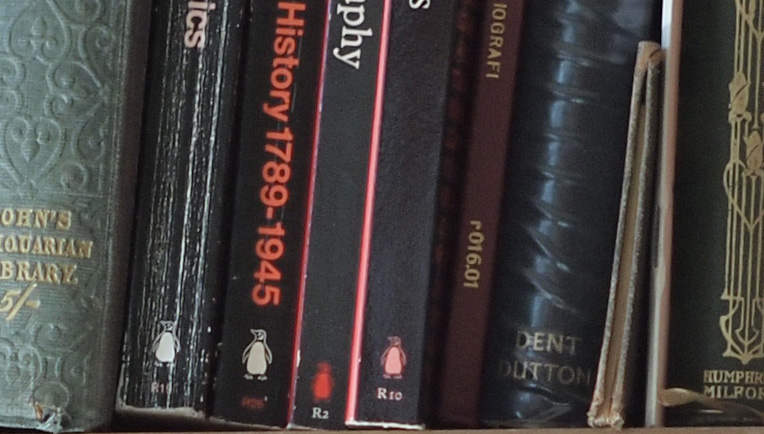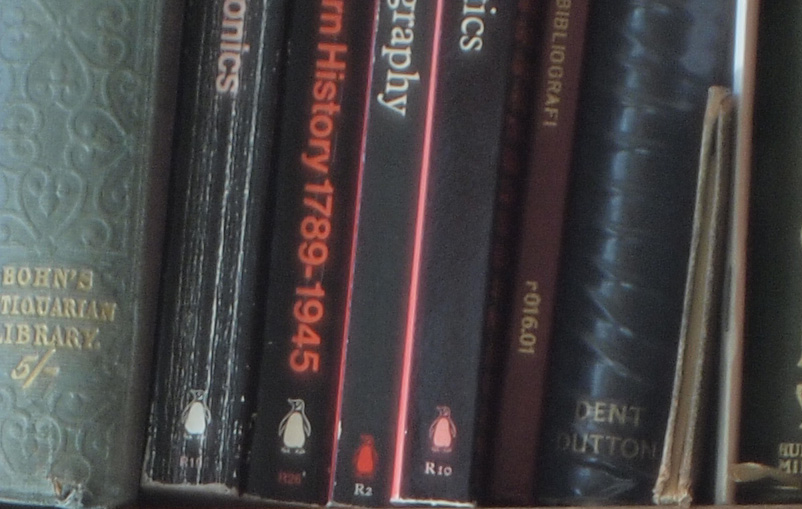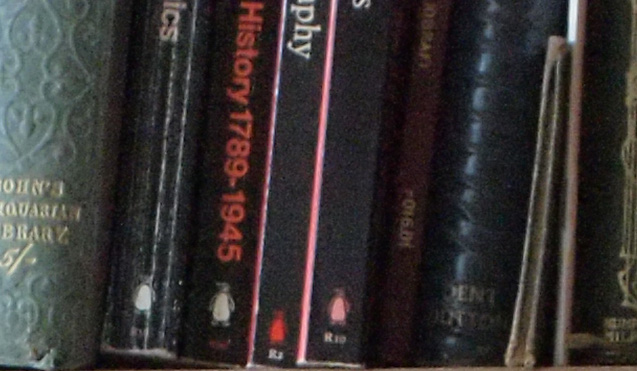| View previous topic :: View next topic |
| Author |
Message |
DanielT74

Joined: 01 Apr 2011
Posts: 204
|
 Posted: Thu Mar 22, 2012 6:13 am Post subject: Who knows anything about Schneider Xenon 50/0.95? Posted: Thu Mar 22, 2012 6:13 am Post subject: Who knows anything about Schneider Xenon 50/0.95? |
 |
|
DanielT74 wrote:
Hello Knowledgeable People!
I can't find anything except for a few samples from this c-mount lens.
When was it made? Did it get used in any serious productions? What about the construction? How good is it?
I know it covers the APS-C sensor and some people adapt it to Leica M-mount, but is it really comparable to the Noktilux 50/0.95?
Any help will be appreciated as always and if I get it, I will be sure to post samples! |
|
| Back to top |
|
 |
Sevo

Joined: 22 Aug 2008
Posts: 1189
Location: Frankfurt, Germany
Expire: 2012-12-03
|
 Posted: Thu Mar 22, 2012 11:59 am Post subject: Re: Who knows anything about Schneider Xenon 50/0.95? Posted: Thu Mar 22, 2012 11:59 am Post subject: Re: Who knows anything about Schneider Xenon 50/0.95? |
 |
|
Sevo wrote:
| DanielT74 wrote: |
When was it made? Did it get used in any serious productions? |
No C mount lens has ever got used in a single serious production, if you consider a regular theatrical release a threshold to seriousness. C was a 16mm mount - and the most amateur/TV one among 16mm mounts at that. Even students exam films (still a genre that rarely has any exposure beyond film institutes) generally used bayonet mount 16mm Arris or Eclairs.
The highest claim to fame for the C mount Xenon might have been its use in TV wildlife and expedition documentaries - IIRC Horst Stern (one of the most popular German wildlife TV show hosts in the early days of TV) was a heavy Bolex user and used fast primes. In general, it will have been a news gathering, surveillance and technical documentation lens...
_________________
Sevo |
|
| Back to top |
|
 |
iangreenhalgh1


Joined: 18 Mar 2011
Posts: 15685
Expire: 2014-01-07
|
 Posted: Thu Mar 22, 2012 12:30 pm Post subject: Posted: Thu Mar 22, 2012 12:30 pm Post subject: |
 |
|
iangreenhalgh1 wrote:
Actually, there was a vogue for using 16mm in the 50s and 60s, particularly in France for the Cinema Verite school.
I can think of three examples of 16mm Bolex used in a major production - Dr Strangelove, Paths Of Glory and A Clockwork Orange. In Strangelove, the battle for the airbase is filmed handheld with 16mm (it is where Spielberg got the idea for the style of Saving Private Ryan from), Paths of Glory includes handheld shots of Kirk Douglas on 16mm during the advance into no-man's land sequence and in A Clockwork Orange some of Alex's dreams after being beaten by the police are shot on 16mm, particularly, the section where he throws himself from an upper storey window - they threw a Bolex out of a window to get the first person perspective of Alex falling.
16mm and Super 16mm has been used to shoot a lot of theatrical films and television dramas, although I suspect the theatrical stuff largely used Arri and Aaton cameras which aren't C-mount, I'm sure some Bolex with c-mount was used, particularly in the 50s, 60s and early 70s.
_________________
I don't care who designed it, who made it or what country it comes from - I just enjoy using it! |
|
| Back to top |
|
 |
Sevo

Joined: 22 Aug 2008
Posts: 1189
Location: Frankfurt, Germany
Expire: 2012-12-03
|
 Posted: Thu Mar 22, 2012 12:50 pm Post subject: Posted: Thu Mar 22, 2012 12:50 pm Post subject: |
 |
|
Sevo wrote:
| iangreenhalgh1 wrote: |
Actually, there was a vogue for using 16mm in the 50s and 60s, particularly in France for the Cinema Verite school.
|
Not that much C mount though. Even the more radical exponents mostly shot sound, and usually live sound at that, so they generally went for blimped or blimpable Arris and Eclairs. But silent handheld 16mm cameras still had a strong niche in news gathering and were, as you pointed out, sometimes used to shoot faux "news" or "reality" segments of theatrical pictures.
_________________
Sevo |
|
| Back to top |
|
 |
iangreenhalgh1


Joined: 18 Mar 2011
Posts: 15685
Expire: 2014-01-07
|
 Posted: Thu Mar 22, 2012 1:02 pm Post subject: Posted: Thu Mar 22, 2012 1:02 pm Post subject: |
 |
|
iangreenhalgh1 wrote:
| Sevo wrote: |
| iangreenhalgh1 wrote: |
Actually, there was a vogue for using 16mm in the 50s and 60s, particularly in France for the Cinema Verite school.
|
Not that much C mount though. Even the more radical exponents mostly shot sound, and usually live sound at that, so they generally went for blimped or blimpable Arris and Eclairs. But silent handheld 16mm cameras still had a strong niche in news gathering and were, as you pointed out, sometimes used to shoot faux "news" or "reality" segments of theatrical pictures. |
Yes, Kubrick used them for faux 'reality/news' in Strangelove, he wanted to get the same look as the 16mm ww2 newsreels. Paths of Glory, they setup a long track alongside the battleground and the 35mm camera on it kept pace with the actors as they scrambled forward, but Kubrick carried a 16mm handheld camera and used it to shoot close shots of Kirk Douglas which were then intercut with the 35mm footage, if you haven't seen this film seek it out, it's an absolute classic with some wonderful cinematography.
Here is the battle sequence, it's wonderfully done:
http://www.youtube.com/watch?v=0ff2x_9G6oI
_________________
I don't care who designed it, who made it or what country it comes from - I just enjoy using it! |
|
| Back to top |
|
 |
ForenSeil


Joined: 15 Apr 2011
Posts: 2726
Location: Kiel, Germany.
|
 Posted: Thu Mar 22, 2012 1:54 pm Post subject: Posted: Thu Mar 22, 2012 1:54 pm Post subject: |
 |
|
ForenSeil wrote:
C-Mount lenses were used in some cinema-productions
At least I read in another forum that "The Punch Bowl"/"Die Feuerzangenbowle" (Comedy, 1944, Germany) is made with Carl Zeiss C-Mount lenses.
EDIT: My Info seems to be wrong. According to IMDB it's made with 2686m 35mm negative film 
_________________
I'm not a collector, I'm a tester 
My camera: Sony A7+Zeiss Sonnar 55/1.8
Current favourite lenses (I have many more):
A few macro-Tominons, Samyang 12/2.8, Noritsu 50.7/9.5, Rodagon 105/5.6 on bellows, Samyang 135/2, Nikon ED 180/2.8, Leitz Elmar-R 250/4, Celestron C8 2000mm F10
Most wanted: Samyang 24/1.4, Samyang 35/1.4, Nikon 200/2 ED
My Blog: http://picturechemistry.own-blog.com/
(German language)
Last edited by ForenSeil on Thu Mar 22, 2012 2:30 pm; edited 5 times in total |
|
| Back to top |
|
 |
mdarnton

Joined: 03 Mar 2012
Posts: 77
Location: Chicago
|
 Posted: Thu Mar 22, 2012 1:58 pm Post subject: Posted: Thu Mar 22, 2012 1:58 pm Post subject: |
 |
|
mdarnton wrote:
Ha. I would hardly call news photography "fringe" or obscure, or second-rate. . . . whatever is belng implied here. Probably their demands exceed the entertainment fluff industry, which accounts for an f/.95 lens made for them.
_________________
small formats: http://flickr.com/mdarnton
large format: http://flickr.com/michaeldarnton
http://mdarnton.tumblr.com |
|
| Back to top |
|
 |
danfromm

Joined: 04 Sep 2011
Posts: 576
|
 Posted: Thu Mar 22, 2012 2:48 pm Post subject: Posted: Thu Mar 22, 2012 2:48 pm Post subject: |
 |
|
danfromm wrote:
There's a little here: http://www.schneiderkreuznach.com/archiv/pdf/ccctv.pdf |
|
| Back to top |
|
 |
Sevo

Joined: 22 Aug 2008
Posts: 1189
Location: Frankfurt, Germany
Expire: 2012-12-03
|
 Posted: Thu Mar 22, 2012 4:57 pm Post subject: Posted: Thu Mar 22, 2012 4:57 pm Post subject: |
 |
|
Sevo wrote:
| mdarnton wrote: |
| Ha. I would hardly call news photography "fringe" or obscure, or second-rate. . . . whatever is belng implied here. Probably their demands exceed the entertainment fluff industry, which accounts for an f/.95 lens made for them. |
While they still were relevant, cinema newsreels were shot on 35mm. TV news originally had very low demands - the quality loss on multi-station relaying or low-bandwidth telephone network/satellite transfer made it rather pointless to target for regular TV quality. The faster Kodak VNF (a popular 16mm electronic news gathering film of the seventies) had a resolution of about 300 lines across the frame - about half the regular PAL/NTSC quality, and in digital terms something like 0.25MP.
In any case, this lens was marketed for technical video applications - which may be above or below TV news demands, but whose specifications pretty invariably were considerably below feature film demands, regardless whether 35 or 16mm.
_________________
Sevo |
|
| Back to top |
|
 |
paulhofseth

Joined: 05 Mar 2011
Posts: 566
Location: Norway
Expire: 2018-06-28
|
 Posted: Thu Mar 22, 2012 8:33 pm Post subject: Schneider 095, sharp with high contrast Posted: Thu Mar 22, 2012 8:33 pm Post subject: Schneider 095, sharp with high contrast |
 |
|
paulhofseth wrote:
I use mine on a 4/3ds. Big and heavy, but sharp and good contrast. I never worry about whether famous films were shot with it. I bought mine some 15years ago. Occasionally I also use a schneider 25/ 0.95, that one vignettes far more.
Due to its diametre I doubt that it was ever intended to be used on a Bolex turret. Also, the later Bolexes had reflex viewfinders and their optics were designed to allow for the splitting prism.
p. |
|
| Back to top |
|
 |
DanielT74

Joined: 01 Apr 2011
Posts: 204
|
 Posted: Fri Mar 23, 2012 4:42 am Post subject: Posted: Fri Mar 23, 2012 4:42 am Post subject: |
 |
|
DanielT74 wrote:
Thanks you, folks! Very interesting.
I am still unclear as to the years of production, optical diagram and especially image quality. If Paul or some other users else can comment how it compares to other very fast lenses, that would be useful too.
Edit: Just found this from Schneider website:
| Quote: |
| In many Space Shuttle missions, NASA uses high-resolution lens sys-tems from Schneider-Kreuznach. Numerous flights were documented using film and video cameras with Schneider lenses such as the Cinegon 1.4/16 mm and 1.4/25 mm or the Xenon 0.95/50 mm. Schneider lens systems also play a key role in the new inspection system used by astronauts for inspecting the outer envelope of the Space Shuttle for damage in orbit. |
http://www.schneiderkreuznach.com/samsung/ueber_schneider_weltraum_e.htm |
|
| Back to top |
|
 |
paulhofseth

Joined: 05 Mar 2011
Posts: 566
Location: Norway
Expire: 2018-06-28
|
 Posted: Fri Mar 23, 2012 9:54 pm Post subject: not much to compare with Posted: Fri Mar 23, 2012 9:54 pm Post subject: not much to compare with |
 |
|
paulhofseth wrote:
I have no experience with other 095s. covering the mft format. A long time ago I used the (full frame) canon 50/1,2, the extra speed was bought at the expense of contrast and resolution so I got rid of it.
I have not run any careful tests, but it does well enough compared with other well regarded lenses , with f. 1,4- 2,8 in that focal lenght, to stay on the camera for indoor pictures. The slower lenses did not seem to have better resolution or contrast at the same apertures, whether wide open or stopped down, and would need too high iso settings to compete for sufficient shutter speeds. BUT it is large and heavy, so there is no point in using it in better light, such as outdoors, even if its picture quality is good there as well.
My copy has a sn above 12 000 000, so it is medium late. The diaphragm is hexagonal and like many lenses designed for fadeout in filming, it closes completely when stopped down beyond minimum aperture. The minimum is f.11. Closest focus is 0,8m.
p. |
|
| Back to top |
|
 |
DanielT74

Joined: 01 Apr 2011
Posts: 204
|
 Posted: Sat Mar 24, 2012 11:54 am Post subject: Posted: Sat Mar 24, 2012 11:54 am Post subject: |
 |
|
DanielT74 wrote:
Thank you again, Paul.
I have the Canon you refer to (the LTM one, right) and indeed it is not very sharp (it leaks light wide open like most of the lenses of that vintage) but it has an interesting character though. On the other hand, the later FD 55/1.2 Aspherical appears to be an exceptionally good fast lens. I am still not clear when was the Xenon 0.95/50 designed and manufactured - it is a 60ies lens? From the looks of it, it appears to be a more recent lens.
Would you possibly have any shots with the Schneider you could post here to show what it can do? |
|
| Back to top |
|
 |
danfromm

Joined: 04 Sep 2011
Posts: 576
|
 Posted: Sat Mar 24, 2012 1:49 pm Post subject: Posted: Sat Mar 24, 2012 1:49 pm Post subject: |
 |
|
danfromm wrote:
To date a Schneider lens, look up its serial number at http://www.schneiderkreuznach.com/service/serie.htm
FWIW, my 17/0.95 Xenon was made in 1996. Not a '60s lens at all. |
|
| Back to top |
|
 |
paulhofseth

Joined: 05 Mar 2011
Posts: 566
Location: Norway
Expire: 2018-06-28
|
 Posted: Sat Mar 24, 2012 1:55 pm Post subject: unreliable evidence Posted: Sat Mar 24, 2012 1:55 pm Post subject: unreliable evidence |
 |
|
paulhofseth wrote:
I cannot find my list of Schneider serial no, so I cannot date the design. Enclosed is a crop of about 750x440pixels from the uppermost edge of a 4000by 3000 jpg frame. It is taken at F2 at a distance of about 3 metres. It is cropped in photoshop,but not sharpened. The camera was an olympus p-1 with sharpening turned off. A similar crop of a Kinoptic 50/2 and kitlens snaps are enclosed for comparison. BUT proper comparisons should be made with several rounds of focussing, since the depth of field is not that great
p.


 |
|
| Back to top |
|
 |
danfromm

Joined: 04 Sep 2011
Posts: 576
|
 Posted: Sat Mar 24, 2012 2:17 pm Post subject: Posted: Sat Mar 24, 2012 2:17 pm Post subject: |
 |
|
danfromm wrote:
Paul, what is the shape of your 50/.95 Xenon's diaphragm? I ask because my little 17/.95's is approximately square. |
|
| Back to top |
|
 |
DanielT74

Joined: 01 Apr 2011
Posts: 204
|
 Posted: Tue Mar 27, 2012 1:24 pm Post subject: Posted: Tue Mar 27, 2012 1:24 pm Post subject: |
 |
|
DanielT74 wrote:
Dan, the one's I've seen have been rounded hexagonal. I think Paul said his is too. |
|
| Back to top |
|
 |
DanielT74

Joined: 01 Apr 2011
Posts: 204
|
 Posted: Mon Apr 02, 2012 10:53 am Post subject: Posted: Mon Apr 02, 2012 10:53 am Post subject: |
 |
|
DanielT74 wrote:
I posted some test pics with the Xenon here: http://forum.mflenses.com/viewtopic,p,1220220.html#1220220
Would be nice to hear from other users if this is similar to what they are getting (mine has some damage on the coating of one of the inner rear elements, probably from past fungus). |
|
| Back to top |
|
 |
|
|
|
You cannot post new topics in this forum
You cannot reply to topics in this forum
You cannot edit your posts in this forum
You cannot delete your posts in this forum
You cannot vote in polls in this forum
|
